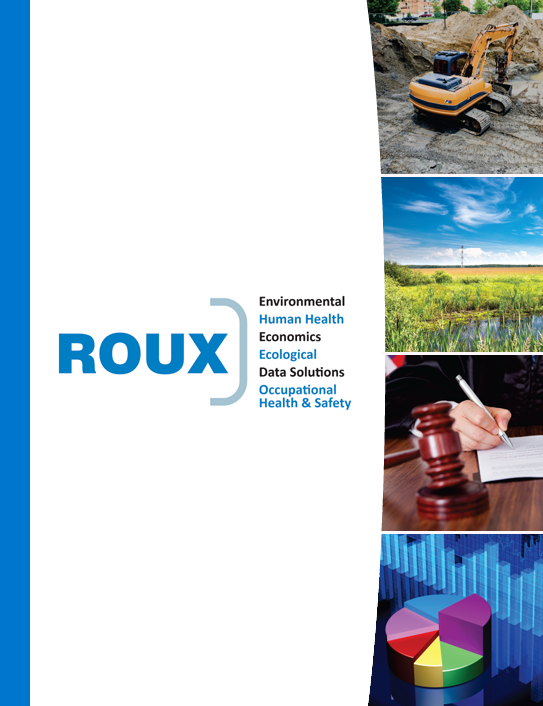COVID-19 Facility Management & Decontamination
Considerations for Assessing What Are Appropriate
and Necessary Steps for Facility Management
Related to COVID-19
While coronavirus disease 2019 (COVID-19) has been incredibly disruptive in most aspects of our current day-to-day lives, those responsible for facilities additionally bear some responsibility to take the appropriate and necessary steps to ensure their facility is safe when people reoccupy public areas and work spaces.
While every location has site-specific considerations, Roux’s experts in biodecontamination and facility restoration have been tracking the evolution of best practices based on Federal, State, and local health agencies regarding investigative testing, facility cleaning, and disinfection. Site-specific considerations for infection control would include:
- Site-specific exposure assessment,
- Safe work practices,
- Use of appropriate engineering and/or administrative controls, and
- Personal protective equipment (PPE).
Thus, there is not a one-size fits all approach for managing COVID-19 risks. This requires the strategic analysis and selection of qualified and reputable contractors and laboratories.
The most current information tells us that:
- COVID-19 being viable for infection on surfaces is highly variable, but can be viable for as long as a few hours to days.[1]
- COVID-19 can be efficiently inactivated within 1 minute using surface disinfection procedures with 62-71% ethanol, 0.5% hydrogen peroxide, or 0.1% sodium hypochlorite.[2]
Currently, the use of surface sampling for COVID-19 appears to be primarily for research purposes, as comprehensive sampling for a facility would be intensive and relatively expensive. Sampling and detection of COVID-19 on surfaces involves specific sampling and analysis procedures with swabbing of surfaces with viral transport solution,[3] and transporting the samples to a laboratory for identification using molecular genetics assays (PCR and sequencing) to identify gene targets unique to COVID-19.[4] Genetic-based testing would detect COVID-19 whether or not the virus is viable for infection, whereas cell-based assays are required to determine if the virus is still viable for infection. While it is known that COVID-19 and other viruses leave residual genetic material on surfaces even after being inactivated, it is not typical for “physical damage” to be demonstrated using such testing prior to decontamination.
Instead, for facilities providing “essential operations” or for facilities with known COVID-19 exposure, ongoing facility protection typically involves prescriptive surface decontamination procedures, seeking to reduce the potential of surface transmission without the step of specifically identifying and confirming any actual surface exposure to the virus. The United States Centers for Disease Control (CDC) has different guidance for facility management, including cleaning and disinfection for different types of facilities, for example:
- Healthcare
(https://www.cdc.gov/coronavirus/2019-ncov/infection-control/control-recommendations.html)
- Community Facilities
(https://www.cdc.gov/coronavirus/2019-ncov/community/organizations/cleaning-disinfection.html) - Households
(https://www.cdc.gov/coronavirus/2019-ncov/prepare/cleaning-disinfection.html)
In addition, there are numerous private facility cleanup contractors offering active cleaning and decontamination services that follow the CDC guidance or similar. Again, what might be appropriate for any particular facility is a site-specific evaluation.
Alternatively, for those facilities that either 1) do not have confirmed exposures, 2) are able to remain unoccupied for a period of time, or 3) operate for a limited time under other protective control measures, no active surface decontamination procedures may be necessary or appropriate. Instead, allowing for time and environmental conditions to result in the expected natural attenuation of the virus may appropriately eliminate any perceived or residual risk.
These facility and risk management decisions involve lots of operational and technical considerations and integration of a constant stream of newly developing data about COVID-19 in a spectrum of disciplines. Please fill out the form below if you would like an expert from Roux to reach out to assist in developing a strategy for your facility and situation. Roux can provide guidance in sampling and cleaning criteria, selection of a reputable contractor, and identification of qualified laboratories.
[1] van Doremalen N, Bushmaker T, Morris DH, Holbrook MG, Gamble A, Williamson BN, Tamin, A, Harcourt JL, Thornburg NJ, Gerber SI, Llyoyd-Smith JO, de Wit E, Munster VJ (2020) Aerosol and Surface Stability of SARS-CoV-2 as Compared to SARS-CoV-1. The New England Journal of Medicine. Correspondence March 17, 2020.
[2] Kampf G., Todt D., Pfaender S., Steinmann E. (2020) Persistence of coronaviruses on inanimate surfaces and their inactivation with biocidal agents. Journal of Hospital Infection, 104 (3), pp. 246-251.
[3] World Health Organization. (2020) Surface sampling of coronavirus disease (COVID-19): A practical “how to” protocol for health care and public health professionals.
[4] World Health Organization. (2020) Molecular assays to diagnose 2019-nCoV. https://www.who.int/emergencies/diseases/novel-coronavirus-2019/technical-guidance/laboratory-guidance.
